Caring for The Star of the Garden
Tomatoes seem to take center stage in most veggie gardens and often hog the spotlight. And why not? Home grown tomatoes taste so much better than shipped-from-afar-store-bought fruits plus there are so many intriguing and beautiful varieties to choose from. Tomato plants are happy in pots, thrive in raised beds and just as well in the ground. They are relatively easy to grow if you can give them at least five hours of direct sun a day. You will be richly rewarded with an exquisite late summer harvest if you provide a stake to support their growth, feed them well with quality compost and prune them properly. Sound intimidating? It’s not really, once you understand basic tomato plant anatomy.
Anatomy of a Tomato Plant
FUN FACT:Tomato plants are hermaphroditic plants – meaning their flowers have both male and female parts – which means they can self-pollinate. Very handy indeed! |
Tomatoes plants are vines that grow from a main stem from which compound leaves grow in an alternating pattern. The compound leaves are the “solar panels” of the plant. Among other things, they soak up the sun and allow for the process of photosynthesis which is basically turning solar energy into carbohydrates – food for the plant and the microorganisms in the soil. Flowers develop on the stem. Fruit develops from the flower. A “sucker” develops in the axil, the space between the stem and the compound leaf. If left to grow, the sucker will develop into a stem which will support more flowers and more compound leaves.
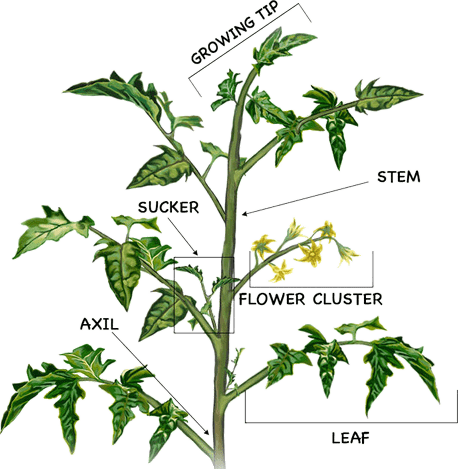
There are indeterminate, determinate and semi-determinate tomatoes. This refers to different kinds of growth patterns. Indeterminate tomatoes grow all season long from a growing tip called a terminal bud. These plants can reach over ten feet tall or more in one season. Determinate varieties a.k.a. bush varieties, grow only about four feet tall, produce their fruit and then die. And semi-determinate have characteristics of both.
How and Why to prune
TIP:Be sure to check out the corresponding Instagram highlights for in-person pruning advice from yours truly! |
Pruning a tomato plant involves removing the suckers and cutting off the compound leaves. By doing this you can control the shape and size of a plant and direct its energy to developing more flowers and fruit and less leaf and stem. The other benefit of pruning is that you create more airflow between plants and reduce the chance of spreading disease.
There are as many ways to prune as there are gardeners. With indeterminate varieties, we like to allow only three or four suckers to develop into stems. Our tomatoes grow in raised beds and are spaced one plant every other square foot. This is fairly dense spacing so we want to keep the growth of each plant controlled but we also want lots of fruit so three stems is my idea of a happy medium. With determinate or bush varieties, we allow many more stems to develop.
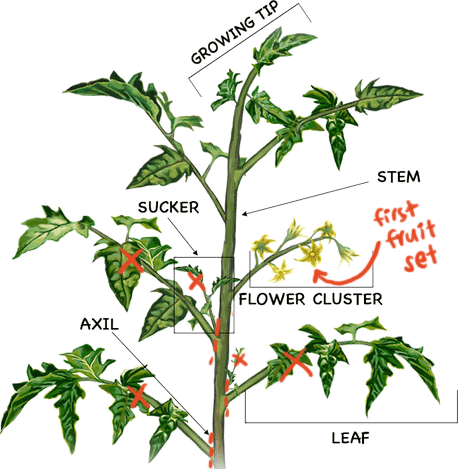 Cut right to the stem! |
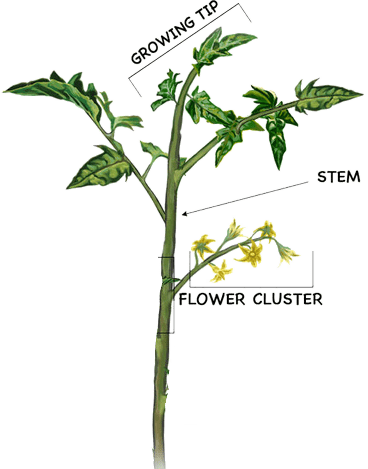 Pruned! |
TIP:Don’t prune when tomato leaves are wet as it can transfer diseases easily. Plus wet tomato leaves can be irritation to skin and make it extra sensitive to sunlight. |
We start looking for suckers soon after the seedling has been planted. We prune off all suckers below the first fruit set as we have learned that these stems tend to be weaker and harder to stake than those that are higher up the vine. We also aim for balance so we make sure to allow suckers on opposite sides of the plant to develop. Each sucker that develops into a stem needs to be staked.
We also like to prune off the compound leaves at their base where they meet the stem. We start at the bottom of the plant and work our way up, removing as many overlapping leaves as possible. Admittedly this gives the plant a Charlie-Brown-Christmas-tree look but it is much better than having a tangle of stems, leaves and rotting fruit. Yes, every cut is an injury to a plant but you can minimize any negative effects by using sharp pruners and keeping them clean with a little rubbing alcohol or a water/bleach solution. Resist the temptation to use your dirty fingernails.

Support your Plants
Tomato plants grow best when they are supported from below with a stake or from above by a rope. Growing vertically allows for more plants in a small spaces and keeps the fruit off the ground where it can easily rot. The plants will need to be tied to the stake or clipped to the rope as they don’t grow tendrils that cling to their support like cucumbers or peas, or wind around poles like beans.
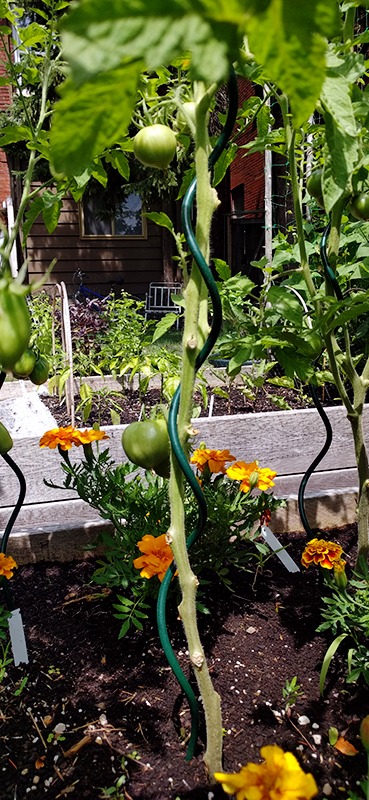 Tomato Spiral |
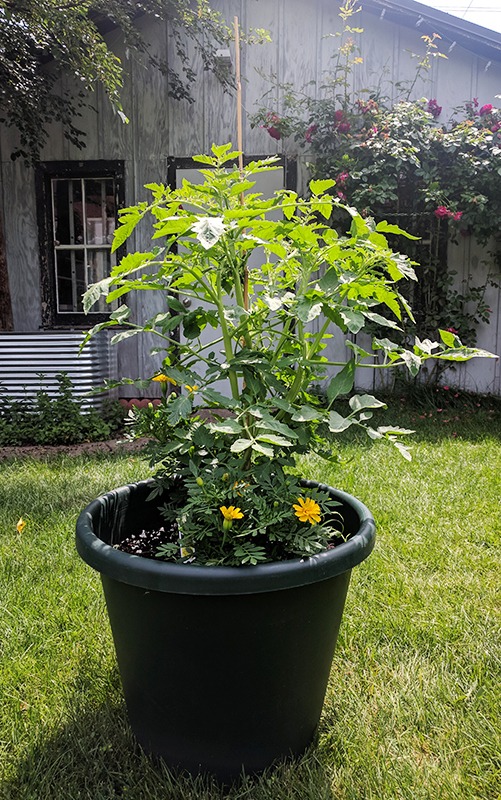 Bamboo Stake |
 String and Clips |

When you feed your soil, you feed your plants
TIP:Did you know that tomato leaves are poisonous? Don’t try to eat pruned leaves or use them as mulch for other plants |
Tomatoes like most fruiting crops are considered “heavy feeders” that require lots of good nutrition for healthy blooms and fruit to develop. We like to plant our seedlings with a good handful of vermicompost (Jocelyn’s Soil Booster) in the planting hole and then top dress with another large handful about a month later. At planting time we also add Root Rescue, (mycorrhizae fungi), Soil Activator (beneficial bacteria), and a tablespoon of Better World (insect frass) in the planting hole. We feed biweekly with liquid kelp and monthly with sea minerals from The Organic Gardeners Pantry. Feeding protocols deserve a whole blog post of their own so stay tuned!